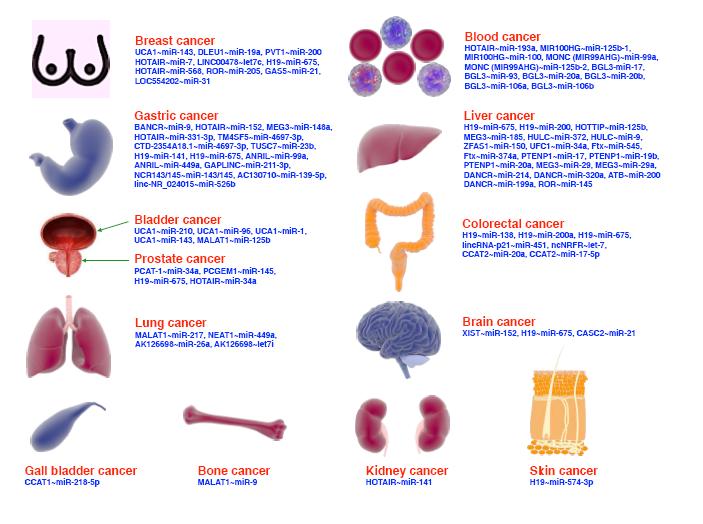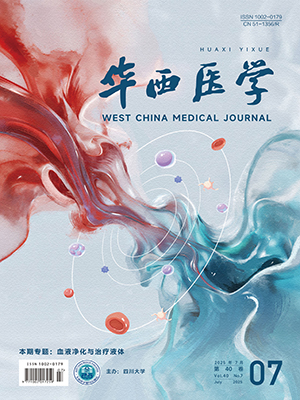Objective To specify the specific wind environment conditions of the outdoor wind speed field and wind pressure field in Wuhan Huoshenshan Hospital, identify the epidemic prevention area under special conditions such as daily cleaning and disinfection as well as accidents, and provide technical references for epidemic prevention work.Methods The network open data were adopted to build 3D models of buildings in Wuhan Huoshenshan Hospital and surrounding areas by using Auto CAD 2008 software, and then PHOENICS 2011 software was used to parameterize settings to simulate winter outdoor wind speed and wind pressure fields, to identify the epidemic prevention area under special conditions such as daily cleaning and disinfection as well as accidents.Results In the prevailing wind direction, the speeds of wind towards the No. 1 building, the intensive care unit and the reception area for confirmed patients transferred by ambulance, the No.2 building, and the temporary storage room of the isolation medical area are 1.0−1.5, 2.5−3.0, 2.0−2.5, and 3.0−3.5 m/s, respectively; the speed of wind towards the living area for medical staff is 2.5 m/s. In the isolation medical area, the pressure difference between the windward side and the leeward side of the building in the first row of the windward side is ≥5 Pa, and those of the rest buildings are ≥0.5 and ≤5 Pa; in the living area for medical staff, the pressure difference between the windward side and the leeward side of the north of the building is ≥5 Pa, while that of the south of the building is ≤0.5 Pa.Conclusion On the whole, there are areas with poor ventilation and at risk of pollutants gathering in Wuhan Huoshenshan Hospital, so the daily cleaning and disinfection work and epidemic prevention work of accident and other special circumstances should be done well.
Citation:
SUN Qiang. Wind environment simulation of Wuhan Huoshenshan Hospital and response of planning analysis to epidemic prevention work. West China Medical Journal, 2020, 35(3): 274-279. doi: 10.7507/1002-0179.202002024
Copy
Copyright © the editorial department of West China Medical Journal of West China Medical Publisher. All rights reserved
| 1. |
李进, 李文全, 聂滨, 等. 输入型难辨性新型冠状病毒肺炎一例及传播模式分析. 华西医学, 2020, 35(2): 137-140.
|
| 2. |
中华人民共和国国家卫生健康委员会. 中华人民共和国国家卫生健康委员会公告[2020 年第 1 号]. (2020-01-20)[2020-02-01]. http://www.nhc.gov.cn/xcs/zhengcwj/202001/44a3b8245e8049d2837a4f27529cd386.shtml.
|
| 3. |
徐祥丽, 杨牧. 世界卫生组织将新型冠状病毒疫情列为 PHEIC. (2020-01-31)[2020-02-24]. http://world.people.com.cn/n1/2020/0131/c1002-31565617.html.
|
| 4. |
杜佳宁, 王岳人, 赵军凯. 既有医院建筑室内风环境模拟及评估. 节能, 2017(6): 7-10.
|
| 5. |
张旻. 基于建筑风环境理念下的太原地区绿色医院建筑设计研究. 太原: 太原理工大学, 2016.
|
| 6. |
刘超, 周建民. 基于 PKPM 绿色建筑软件的医院建筑室内外风环境模拟及评价. 建筑节能, 2020, 48(1): 24-29.
|
| 7. |
Argirious A, Asimakopoulos CA, Balaras E, et al. On the energy consumption and indoor air quality in office and hospital buildings in Athens, Hellas. Energy Convers Manag, 1994, 35(5): 385-394.
|
| 8. |
Szklo AS, Soares JB, Tolmasquim MT. Energy consumption indicators and CHP technical potential in the Brazilian hospital sector. Energy Convers Manag, 2004, 45(13/14): 2075-2091.
|
| 9. |
武汉市人民政府. 自然资源. (2019-01-07)[2020-02-01]. http://www.wh.gov.cn/2018wh/zjwh_5785/whgk/201808/t20180824_223222.html.
|
| 10. |
中国气象局气象信息中心气象资料室, 清华大学建筑技术科学系. 中国建筑热环境分析专用气象数据集. 北京: 中国建筑工业出版社, 2005: 137.
|
| 11. |
张文福, 何俊美, 帖金凤, 等. 冠状病毒的抵抗力与消毒. 中国消毒学杂志, 2020, 30(1): 63-67.
|
| 12. |
中华人民共和国住房和城乡建设部, 国家市场监督管理总局. 绿色建筑评价标准: GB/T 50378-2019. 北京: 中国建筑工业出版社, 2019: 30-31.
|
| 13. |
严婧, 王海军, 程亚平, 等. 人工与自动观测静风的差异分析与应用. 气象, 2017, 43(2): 232-239.
|
| 14. |
孙玫玲, 韩素芹, 姚青, 等. 天津市城区静风与污染物浓度变化规律的分析. 气象与环境学报, 2007, 23(2): 21-24.
|
| 15. |
王芳芳, 李兰, 吴钧. 武汉市空气污染物分布及日变化特征与气象因子的关系//中国气象学会 2008 年年会大气环境监测、预报与污染物控制分会场. 北京: 中国气象学会, 2008: 5.
|
| 16. |
欧阳芬, 吴荷玉, 杨英, 等. 基于武汉新型冠状病毒肺炎快速传播的应对措施. 全科护理, 2020, 18(3). (2020-01-31)[2020-02-02]. http://kns.cnki.net/kcms/detail/14.1349.R.20200131.1319.002.html.
|
- 1. 李进, 李文全, 聂滨, 等. 输入型难辨性新型冠状病毒肺炎一例及传播模式分析. 华西医学, 2020, 35(2): 137-140.
- 2. 中华人民共和国国家卫生健康委员会. 中华人民共和国国家卫生健康委员会公告[2020 年第 1 号]. (2020-01-20)[2020-02-01]. http://www.nhc.gov.cn/xcs/zhengcwj/202001/44a3b8245e8049d2837a4f27529cd386.shtml.
- 3. 徐祥丽, 杨牧. 世界卫生组织将新型冠状病毒疫情列为 PHEIC. (2020-01-31)[2020-02-24]. http://world.people.com.cn/n1/2020/0131/c1002-31565617.html.
- 4. 杜佳宁, 王岳人, 赵军凯. 既有医院建筑室内风环境模拟及评估. 节能, 2017(6): 7-10.
- 5. 张旻. 基于建筑风环境理念下的太原地区绿色医院建筑设计研究. 太原: 太原理工大学, 2016.
- 6. 刘超, 周建民. 基于 PKPM 绿色建筑软件的医院建筑室内外风环境模拟及评价. 建筑节能, 2020, 48(1): 24-29.
- 7. Argirious A, Asimakopoulos CA, Balaras E, et al. On the energy consumption and indoor air quality in office and hospital buildings in Athens, Hellas. Energy Convers Manag, 1994, 35(5): 385-394.
- 8. Szklo AS, Soares JB, Tolmasquim MT. Energy consumption indicators and CHP technical potential in the Brazilian hospital sector. Energy Convers Manag, 2004, 45(13/14): 2075-2091.
- 9. 武汉市人民政府. 自然资源. (2019-01-07)[2020-02-01]. http://www.wh.gov.cn/2018wh/zjwh_5785/whgk/201808/t20180824_223222.html.
- 10. 中国气象局气象信息中心气象资料室, 清华大学建筑技术科学系. 中国建筑热环境分析专用气象数据集. 北京: 中国建筑工业出版社, 2005: 137.
- 11. 张文福, 何俊美, 帖金凤, 等. 冠状病毒的抵抗力与消毒. 中国消毒学杂志, 2020, 30(1): 63-67.
- 12. 中华人民共和国住房和城乡建设部, 国家市场监督管理总局. 绿色建筑评价标准: GB/T 50378-2019. 北京: 中国建筑工业出版社, 2019: 30-31.
- 13. 严婧, 王海军, 程亚平, 等. 人工与自动观测静风的差异分析与应用. 气象, 2017, 43(2): 232-239.
- 14. 孙玫玲, 韩素芹, 姚青, 等. 天津市城区静风与污染物浓度变化规律的分析. 气象与环境学报, 2007, 23(2): 21-24.
- 15. 王芳芳, 李兰, 吴钧. 武汉市空气污染物分布及日变化特征与气象因子的关系//中国气象学会 2008 年年会大气环境监测、预报与污染物控制分会场. 北京: 中国气象学会, 2008: 5.
- 16. 欧阳芬, 吴荷玉, 杨英, 等. 基于武汉新型冠状病毒肺炎快速传播的应对措施. 全科护理, 2020, 18(3). (2020-01-31)[2020-02-02]. http://kns.cnki.net/kcms/detail/14.1349.R.20200131.1319.002.html.




